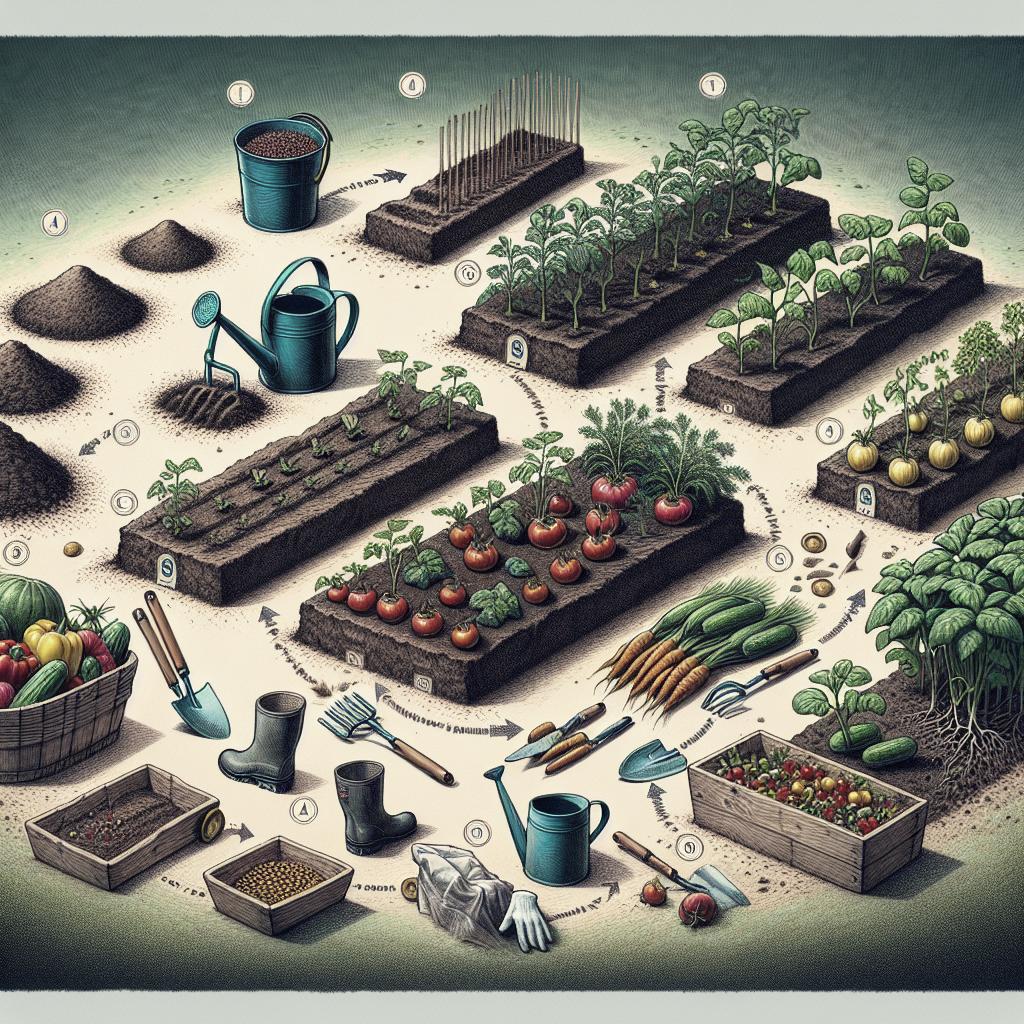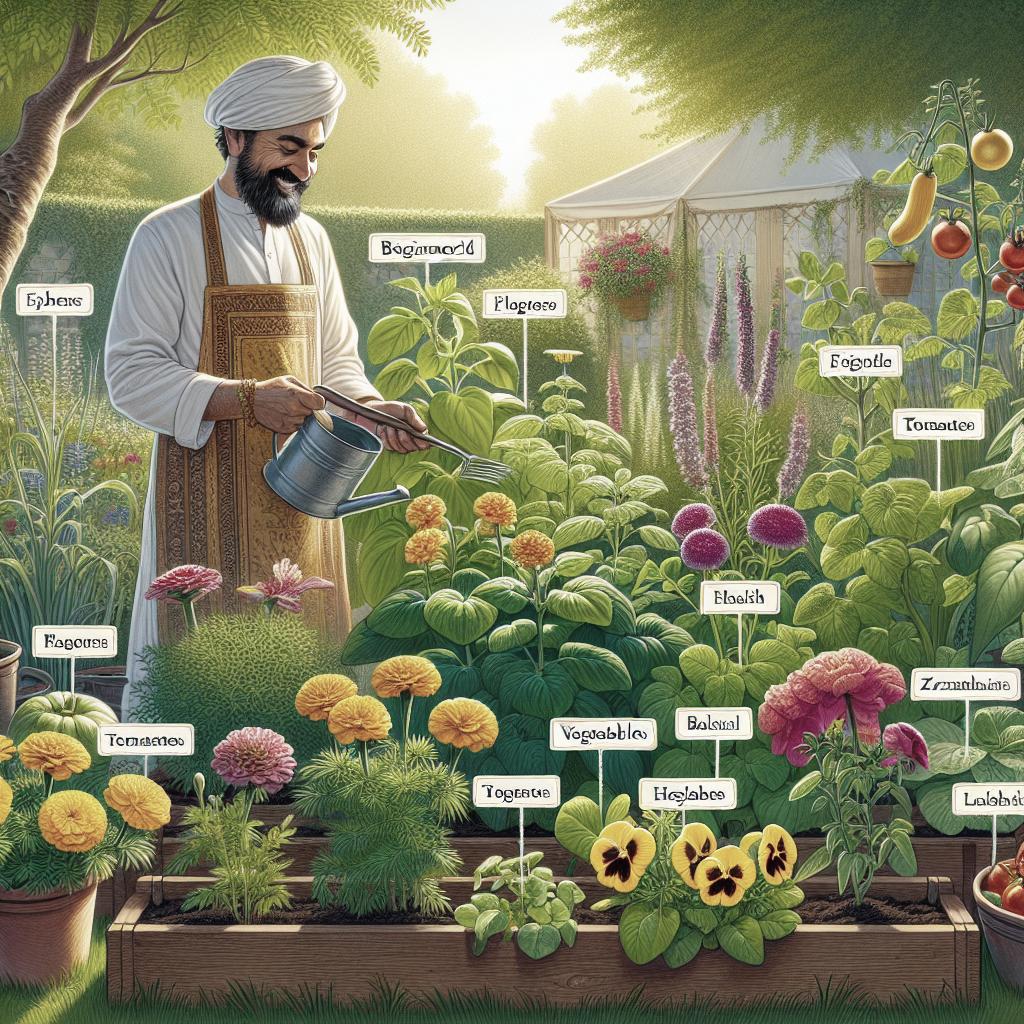“`html
How to Use Vertical Gardening Techniques
In the realm of modern gardening, vertical gardening techniques stand out as an innovative way to cultivate plants when horizontal space is limited. This comprehensive guide explores the benefits of vertical gardening, the best vegetables to grow, and tips for getting started. Whether you’re an urban dweller with a balcony or someone with a sprawling backyard, incorporating vertical gardening can transform your space into a lush, productive oasis. No longer confined to traditional ground plots, discover how these techniques can enhance your gardening experience, provide environmental benefits, and yield healthier plants.
Benefits Of Vertical Gardening
No space? No problem!
One of the standout benefits of vertical gardening is the ability to maximize your growing space, especially in cramped areas. This approach allows gardeners to bypass the limitations of small yards or apartment balconies, making it possible for anyone to cultivate their favorite plants. By growing upward, rather than outward, you make optimum use of available vertical spaces, which might otherwise be overlooked.
For urban dwellers or those with limited outdoor areas, vertical gardening can open up a whole new world of possibilities. Walls, fences, and even the sides of structures can turn into blooming, productive spaces that cultivate life and joy. The flexibility and adaptability of vertical gardening ensure that everyone can harvest the goodness of home-grown produce regardless of the space constraints they face.
Using spaces, you would not have thought of
Vertical gardening invites creativity in its use of spaces that are often neglected or underutilized. You can employ various architectural elements in your environment—such as trellises, arbors, and pergolas—as frameworks for your plants to climb and grow. This approach ingeniously utilizes areas like balcony railings, fences, or even the side of your home as vertical gardens.
By tapping into these unconventional spaces, you’re not only optimizing your gardening potential but also transforming mundane structures into captivating, green features. Vertical gardening allows you to maximize your environment’s potential, making every inch count when it comes to growing and nurturing a diverse array of plants.
Adds a beautiful, interesting visual element
In addition to their practical benefits, vertical gardens introduce a unique and visually stunning element to any setting. These gardens can act as living artworks, with cascading greenery and blossoms sweeping across unusual canvases. Whether it’s a blanket of ivy on a wall or a tower of tomatoes, vertical gardening can dramatically enhance the aesthetic appeal of your space.
The vibrant greenery and diversity of plant species in a vertical garden can transform a bland wall into a lively and photogenic focal point. This visual interest serves both decorative purposes and promotes general well-being, as studies have shown that integrating greenery in living spaces reduces stress and increases happiness.
Easier to maintain
Maintaining a vertical garden can be more manageable than traditional garden beds. With plants elevated from the ground, gardeners can access them more easily without having to bend or kneel, which is beneficial for those with physical limitations. Growing plants vertically reduces the need for arduous tasks like weeding, as weeds are less likely to establish themselves up high.
The accessibility of vertical gardens simplifies tasks such as watering, pruning, and harvesting, allowing for a more pleasant and efficient gardening experience. This ease of maintenance encourages more frequent engagement with the garden, leading to healthier and more productive plant life overall.
Fewer pests, fewer diseases, fewer weeds – Yeah!
Vertical gardening can significantly reduce the prevalence of common gardening problems such as pests, diseases, and weeds. By elevating plants, you create a barrier between the crops and soil-dwelling pests, which find it more challenging to reach the plants. Similarly, the separation from the ground minimizes the transmission of soil-borne diseases.
Furthermore, vertical gardening’s inherent design principles, such as improved air circulation, help deter fungal diseases. The reduction in weeds also contributes to less competition for sunlight and nutrients, resulting in healthier plants with a higher yield potential.
More sun + better airflow = healthier plants
Vertical gardens benefit from enhanced light exposure, as all plants have access to direct sunlight rather than being overshadowed by neighboring foliage. This increased solar exposure is particularly advantageous for sun-loving crops, ensuring they receive the energy needed to thrive and fruit abundantly.
Improved airflow around vertical gardens also strengthens plant health, as it reduces humidity levels and deters diseases like powdery mildew. The combination of better sunlight and airflow fosters a thriving environment where plants can grow robustly and produce more vibrant and bountiful yields.
Cleaner and better-looking crops
Having your produce elevated in a vertical garden means less contact with soil, reducing the likelihood of dirt and grit settling on the crops. As a result, vertical gardening typically yields cleaner and more aesthetically pleasing produce. Harvesting visually appealing vegetables and fruits directly from your vertical garden not only brings satisfaction but also enhances the quality of your culinary endeavors.
This cleaner cultivation method also means reduced labor when it comes to preparing your produce for cooking and consumption, allowing you to enjoy fresh fruits and vegetables with minimal cleaning effort. The vertical garden not only looks attractive but contributes to better quality harvests as well.
Environmental benefits
Beyond personal advantages, vertical gardening positively contributes to broader environmental health. These gardens help improve air quality by absorbing carbon dioxide and releasing oxygen, providing cleaner and fresher air in urban settings. Vertical gardens can also act as natural insulation for buildings, reducing energy costs by maintaining cooler indoor environments during hot weather.
Vertical gardens encourage biodiversity by creating microhabitats for beneficial insects and wildlife, promoting a balanced ecosystem. They can also reduce the urban heat island effect by greening spaces, promoting cooler local climates and mitigating the impact of climate change on urban centers.
Which Veggies Work Best for Vertical Gardening?
Vertical gardening is especially suited for a variety of vegetable crops, many of which naturally lend themselves to vertical growth. Vining vegetables, such as cucumbers, peas, and pole beans, are ideal candidates as they naturally seek vertical ascent and require minimal training to climb supports. Not only do these plants thrive in vertical arrangements, but they also produce bountiful harvests when given sufficient vertical space to expand.
Non-vining vegetables can also adapt well to vertical gardening with the right support structures. Consider planting tomatoes with support cages, or utilizing stackable planters for strawberries, allowing multiple plants to thrive in a vertical orientation. Additionally, leafy greens such as lettuce and spinach can be grown successfully in vertical systems equipped with pockets or shelves.
Root vegetables like carrots and radishes might pose a challenge in traditional vertical gardens due to spatial constraints, but they can still be grown using vertical planters designed specifically for root depths. With innovation and planning, the variety of vegetables you can grow vertically is broader than one might initially think.
Some Tips For Vertical Gardening
Successful vertical gardening often begins with selecting the right support structures tailored to your plant selection. Evaluate your space and choose options that best fit your budget and aesthetic preferences, whether it’s a store-bought trellis, an upcycled ladder, or custom-built wall planters. Opt for materials durable enough to support full-grown plants and withstand environmental conditions.
Consider your location’s light conditions when planning your vertical garden. Vertical setups can cast shadows over certain areas depending on the sun’s angle, possibly affecting the health of shade-sensitive plants. Arrange your garden accordingly, positioning sun-loving crops at the top and shade-tolerant plants below. Efficiently utilizing natural light is vital for thriving plants and optimal growth.
Regularly monitor water needs, as vertical gardens often have different hydration requirements compared to traditional garden beds. Ensure your vertical setup has an efficient watering solution, like a drip irrigation system, which can help evenly distribute moisture throughout. Vertical gardens can suffer from faster water runoff and evaporation; thus, frequent check-ins on soil moisture levels are critical.
Vertical Planting Ideas
If you’re looking to creatively maximize space, consider cage structures that offer individual pockets for vegetables, like onion or herbs, that don’t mind being packed close together. These multi-tiered solutions can grow a significant amount of produce in surprisingly little space, offering both efficiency and variety in your gardening approach.
Another idea is to repurpose old pallets by turning them into vertical planters. Align the pallet sections snugly together and fill them with soil, creating a rustic ladder of plants. Charming to the eye and functional, pallets offer versatility and can fit small spaces, making them an excellent choice for urban gardeners looking for unexpected solutions.
For a touch of elegance, hanging planters filled with trailing herbs or ornamentals can add dimension to your vertical garden. These hanging elements can integrate seamlessly with traditional climbing plants to create a layered and lush wall of greenery. Consider combining vining veggies with ornamental flowers for a balanced aesthetic that nourishes both your body and spirit.
Next Steps
| Topic | Summary |
|---|---|
| Benefits Of Vertical Gardening | A detailed look into the space-saving, aesthetic, maintenance, and environmental benefits of vertical gardening. |
| Which Veggies Work Best | Highlights vegetables most suitable for vertical growing, including vining, non-vining, and root vegetables. |
| Some Tips For Vertical Gardening | Guidelines on structures, lighting, and watering to ensure success in vertical gardening endeavors. |
| Vertical Planting Ideas | Innovative ideas for setting up a vertical garden using various materials and methods. |
“`


